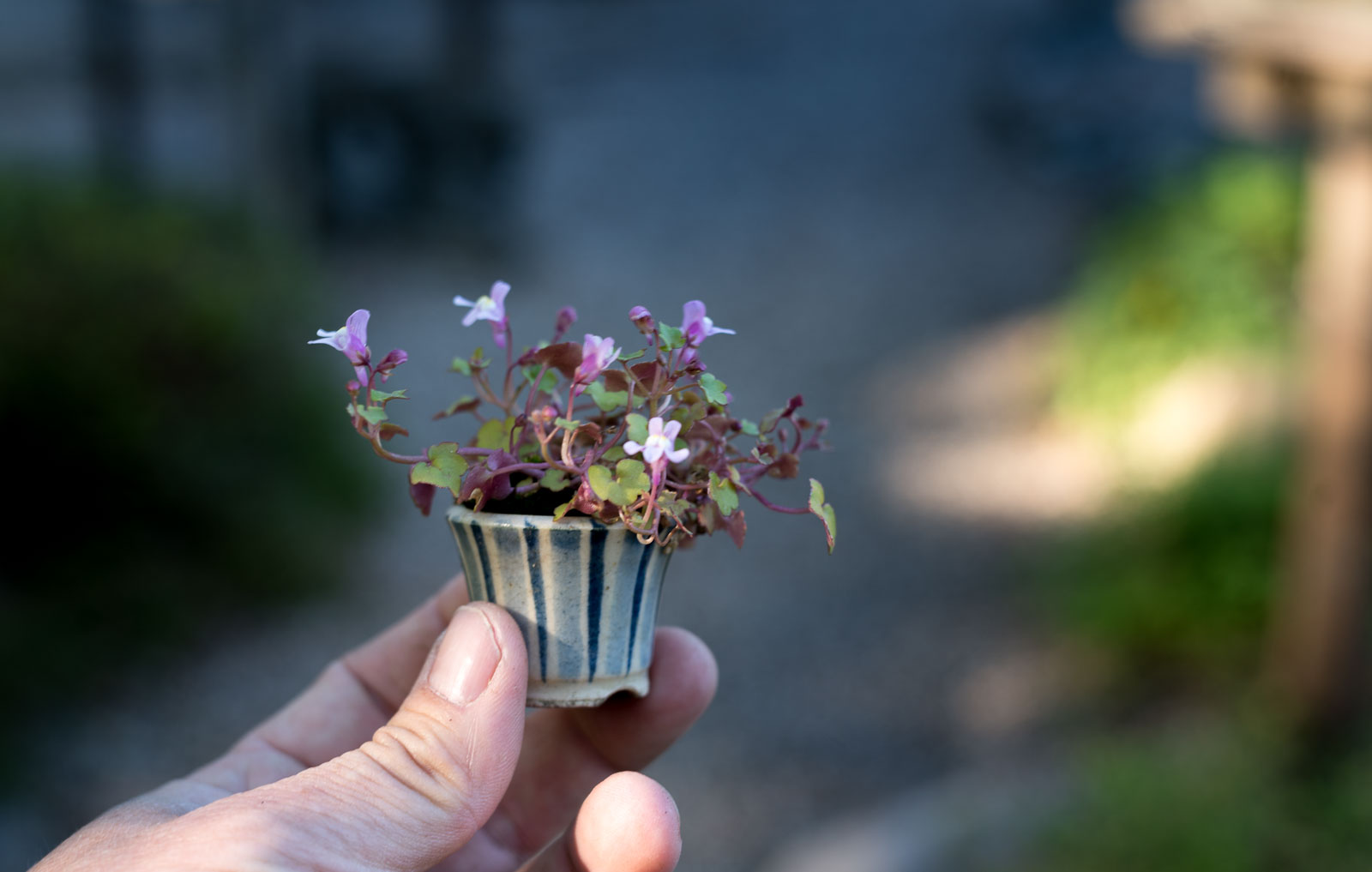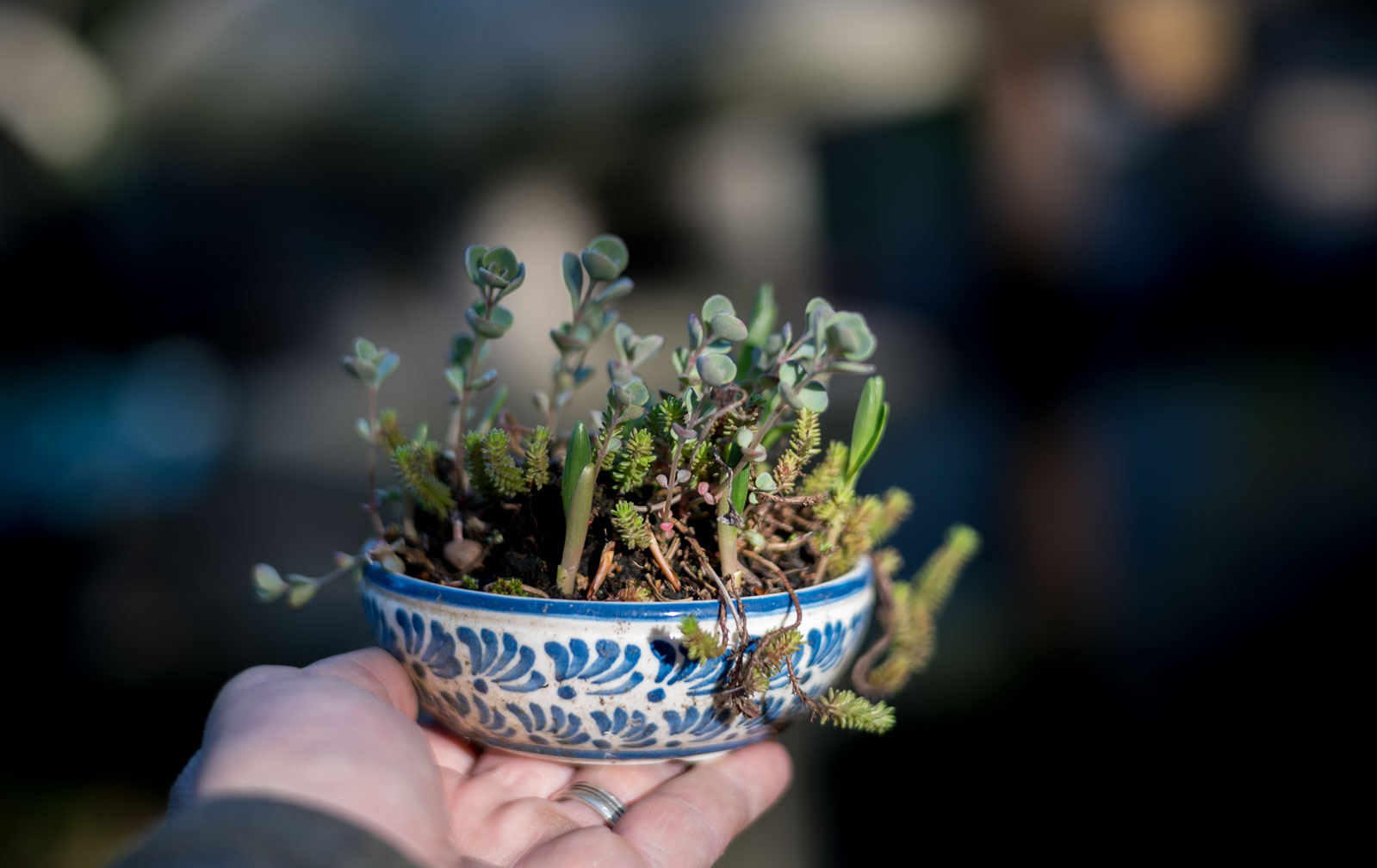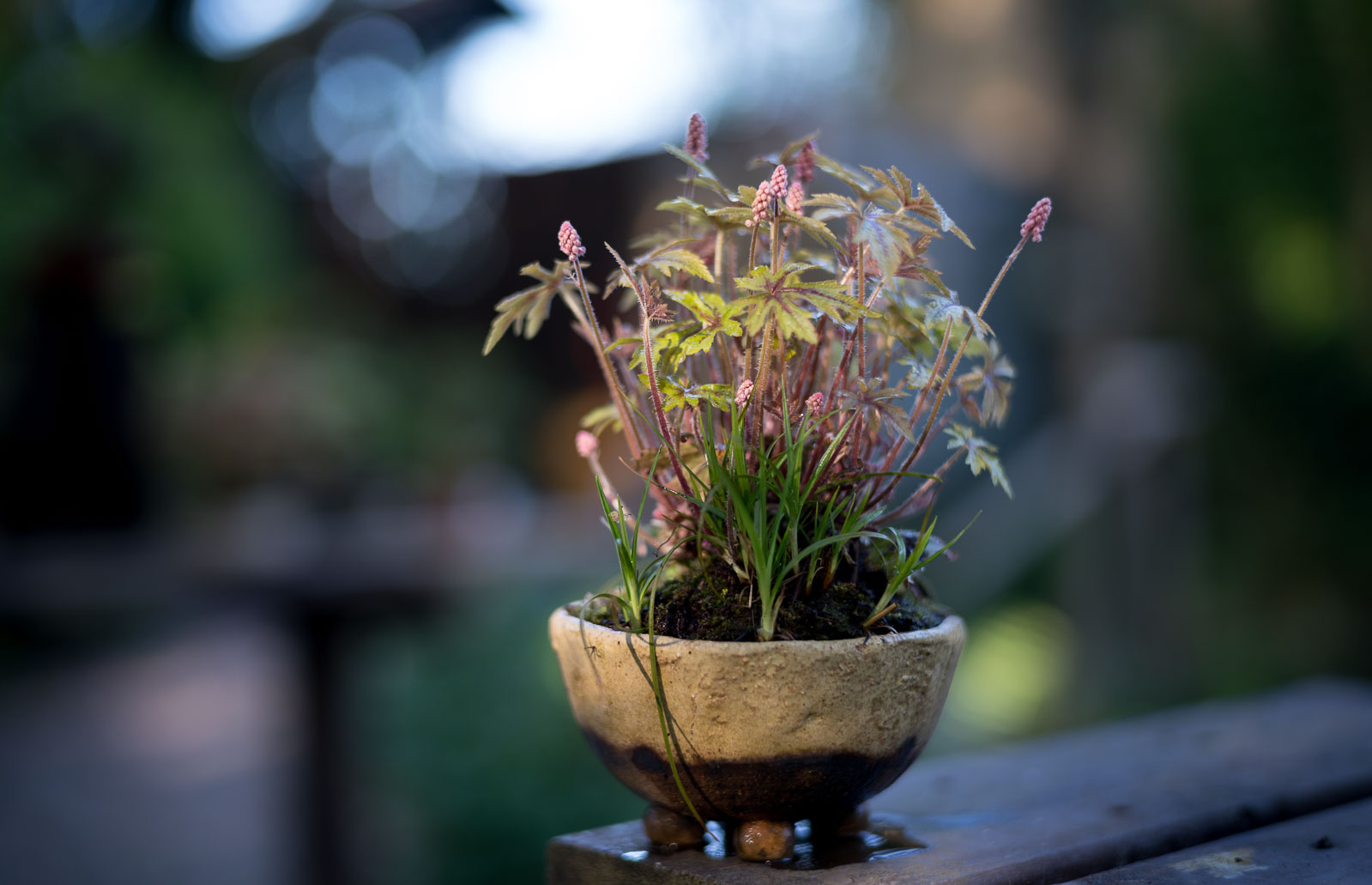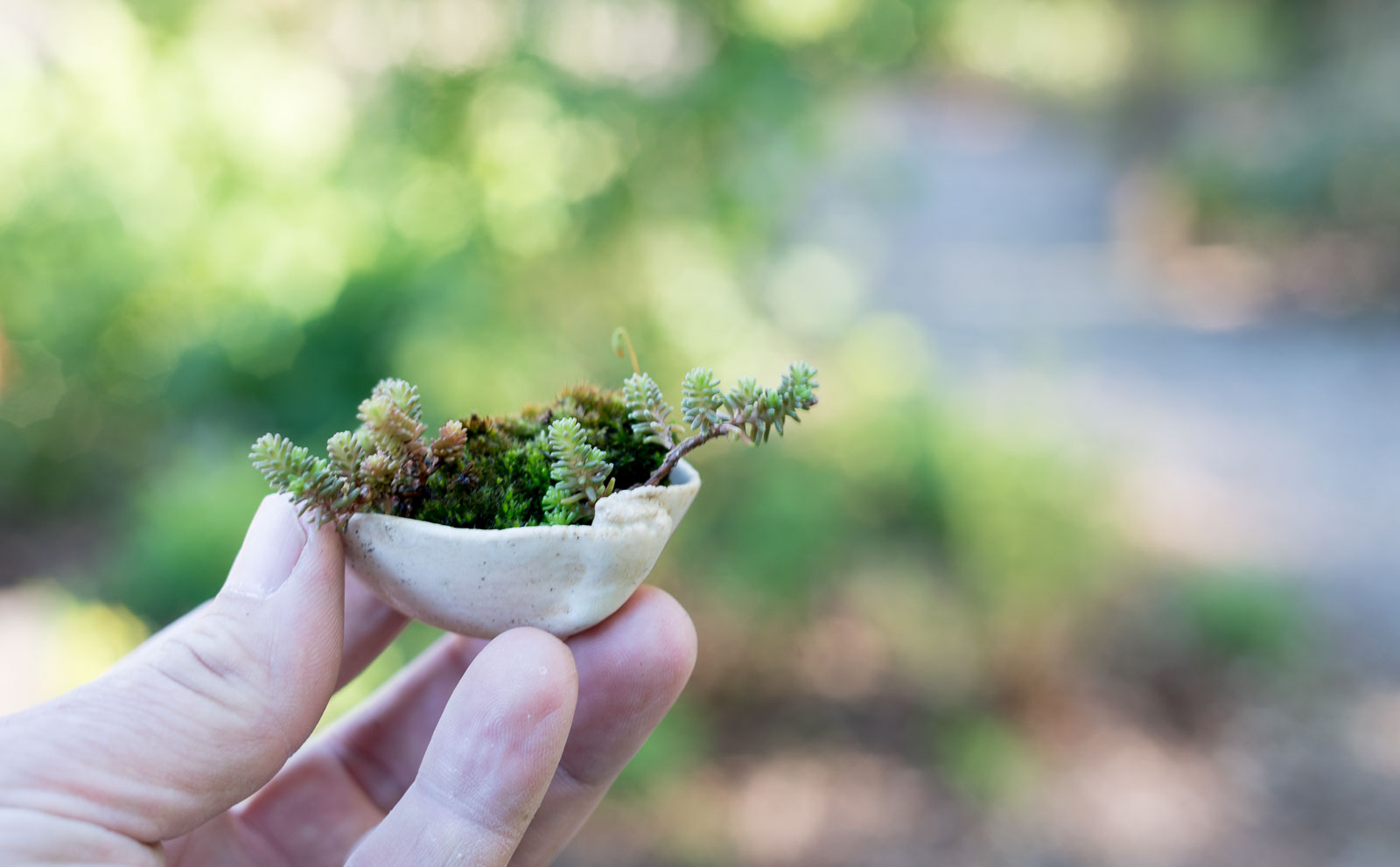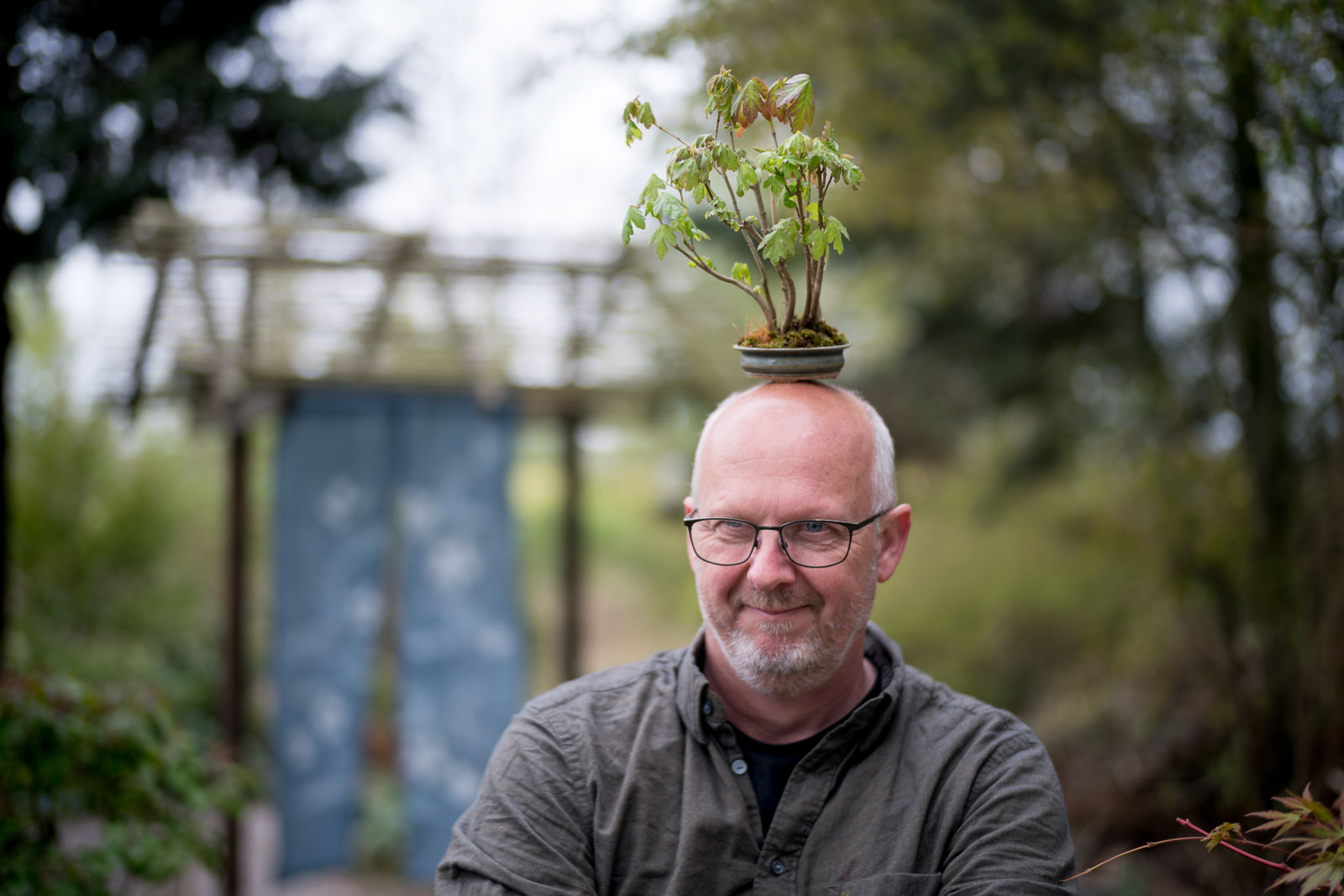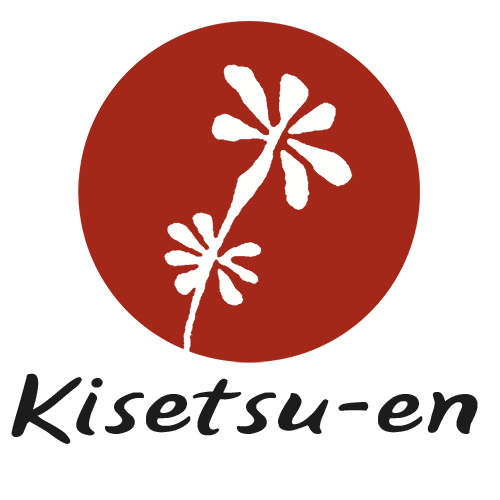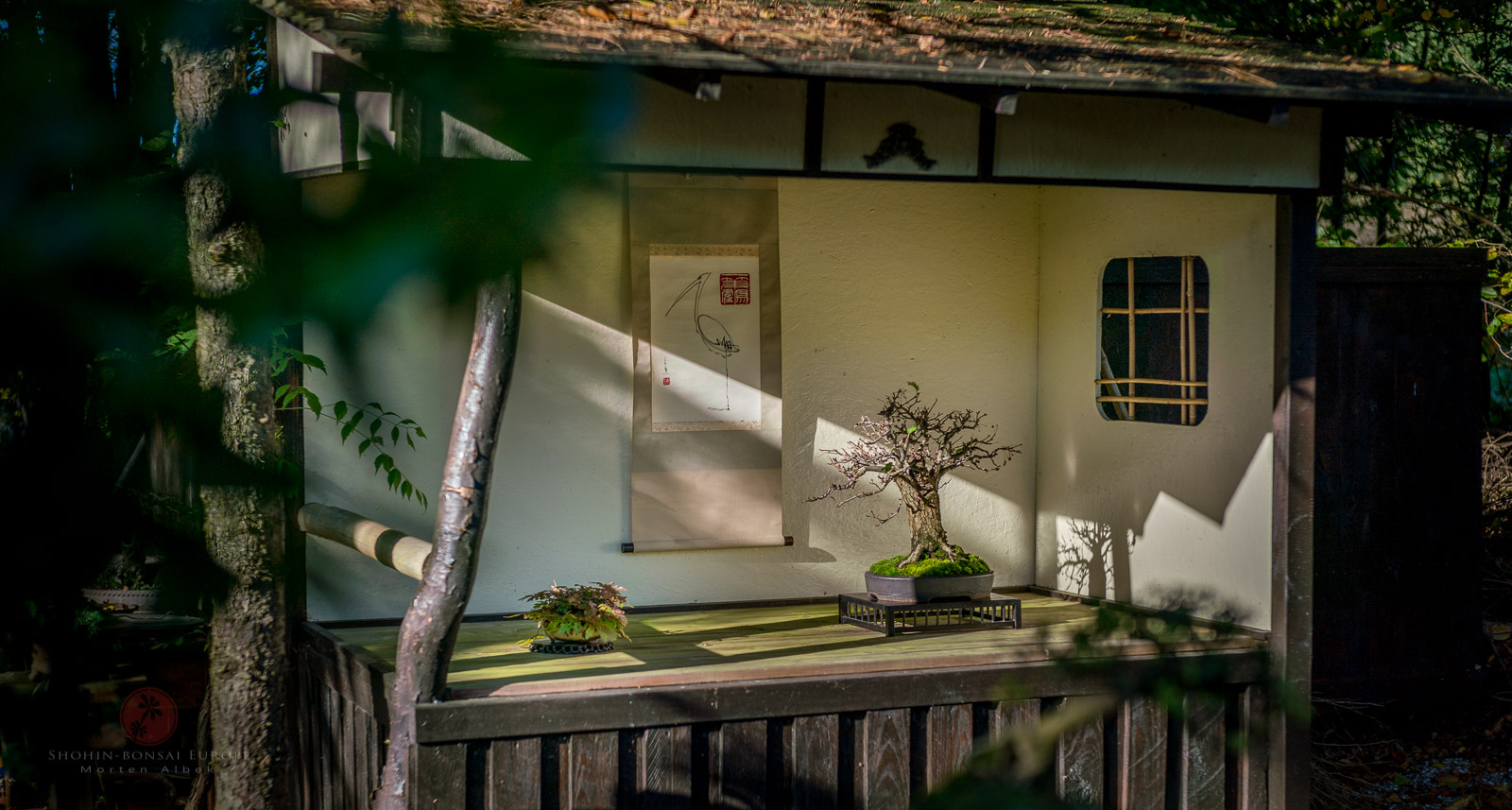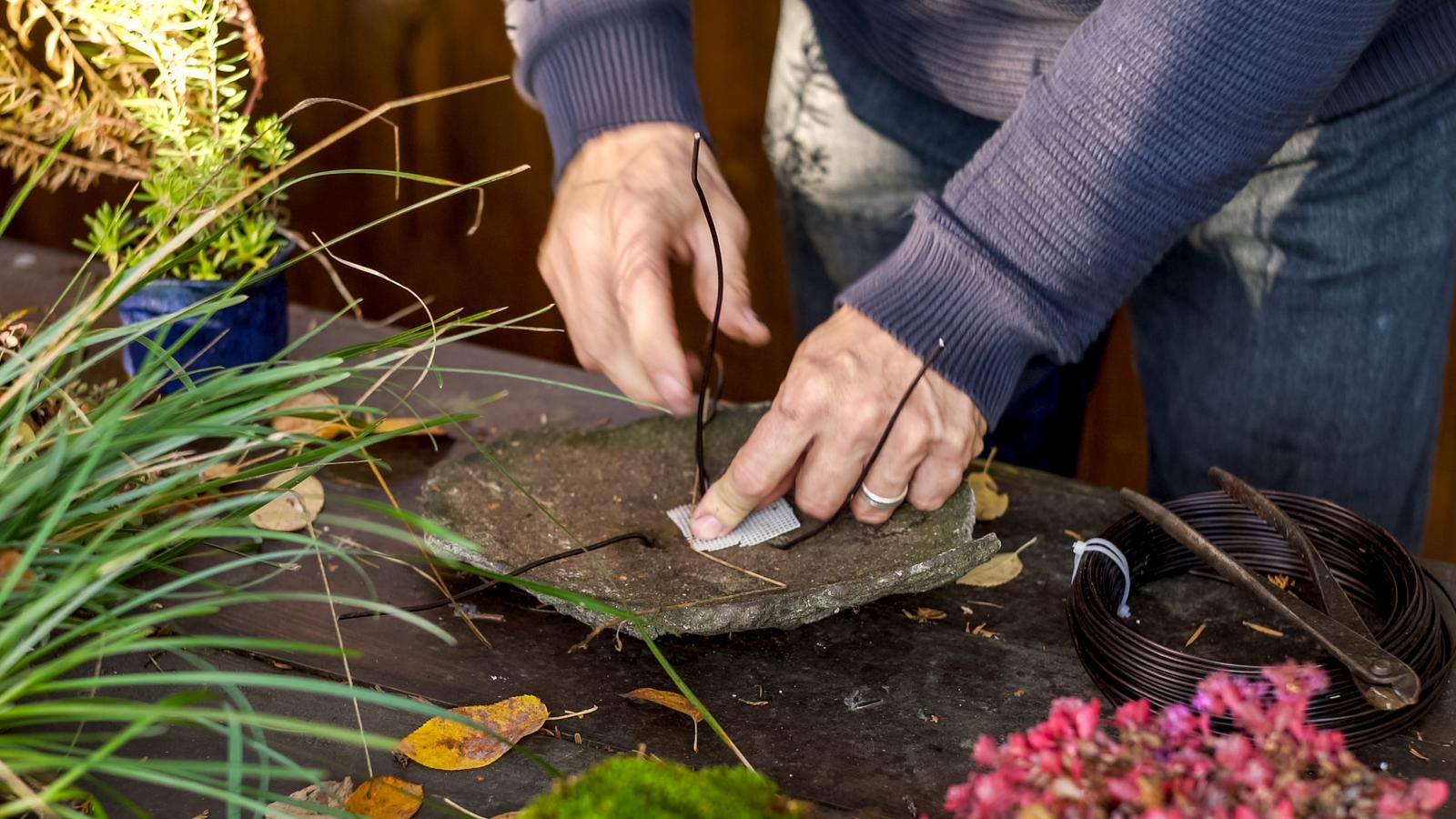
Flowers and grasses in the bonsai garden
In my garden, I grow a small variety of plants as accents for my bonsai or just to stand alone. Accents can be everything with flowers or non-flowering species like grasses.
Accents for bonsai or stand-alone
The purpose of growing small plants for bonsai is to extend the landscape feeling when watching a display. The tree might be growing in the mountains, and therefore the accent has to support the environment. As well as the time of the year the presentation is set up.
I grow some of these small shrubs and soft plants not only to be a part of a display. But because I simply like the plants. For me, that is an important part of the bonsai game. Some of these plants will not reach a public bonsai display, because the exhibitions take place when the plants are not flowering or peaking at that time of the year. I still have them though, because they add a feeling and beauty to my bonsai garden I will not miss for a moment.
Selecting the right plants for accents, or companions is important. The plants have to be small enough to fit and live in a container. If plants are grouped in the same container you need to be aware of different watering needs and soil demands. Put together plants that are drought tolerant in one group, and another for more moist loving plants. Or grow individually.
I make some trial and errors, and sometimes I find plants that goes well together, although it seemed like they couldn’t. At other times the obvious fails. Learning by doing but do some research first to avoid obvious mistakes. Sedums are good because they grow in small natural spaces and tolerates drying out.
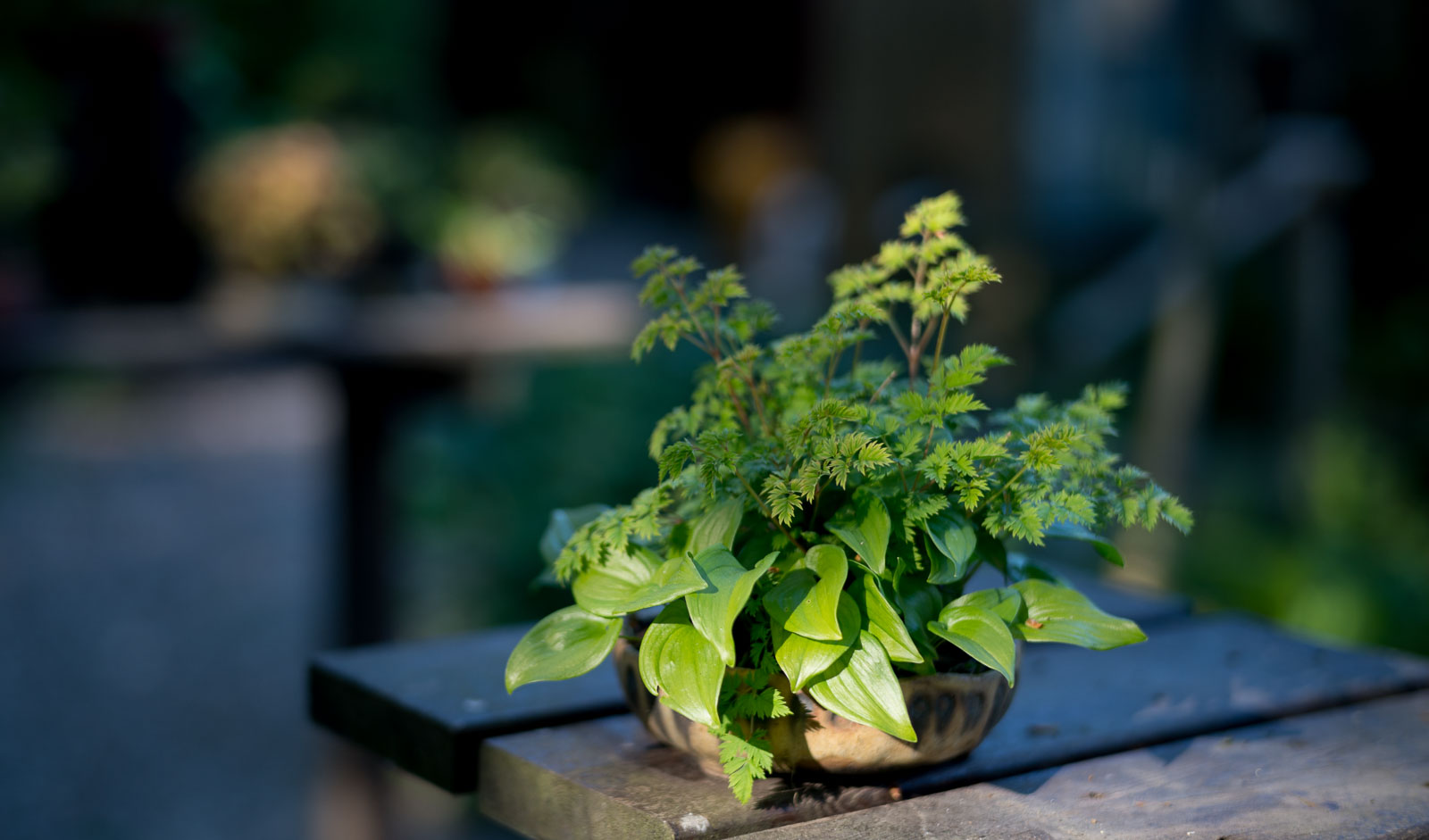
Others are more demanding and need some protection from the sun, like Convalaria majalis. I parred that with a Dwarf Astilbe, and it goes surprisingly well, despite the differences in growth. The Astilbe is sun-loving but when grown in a container it demands some dappled shade, supporting the needs of the Convalaria.
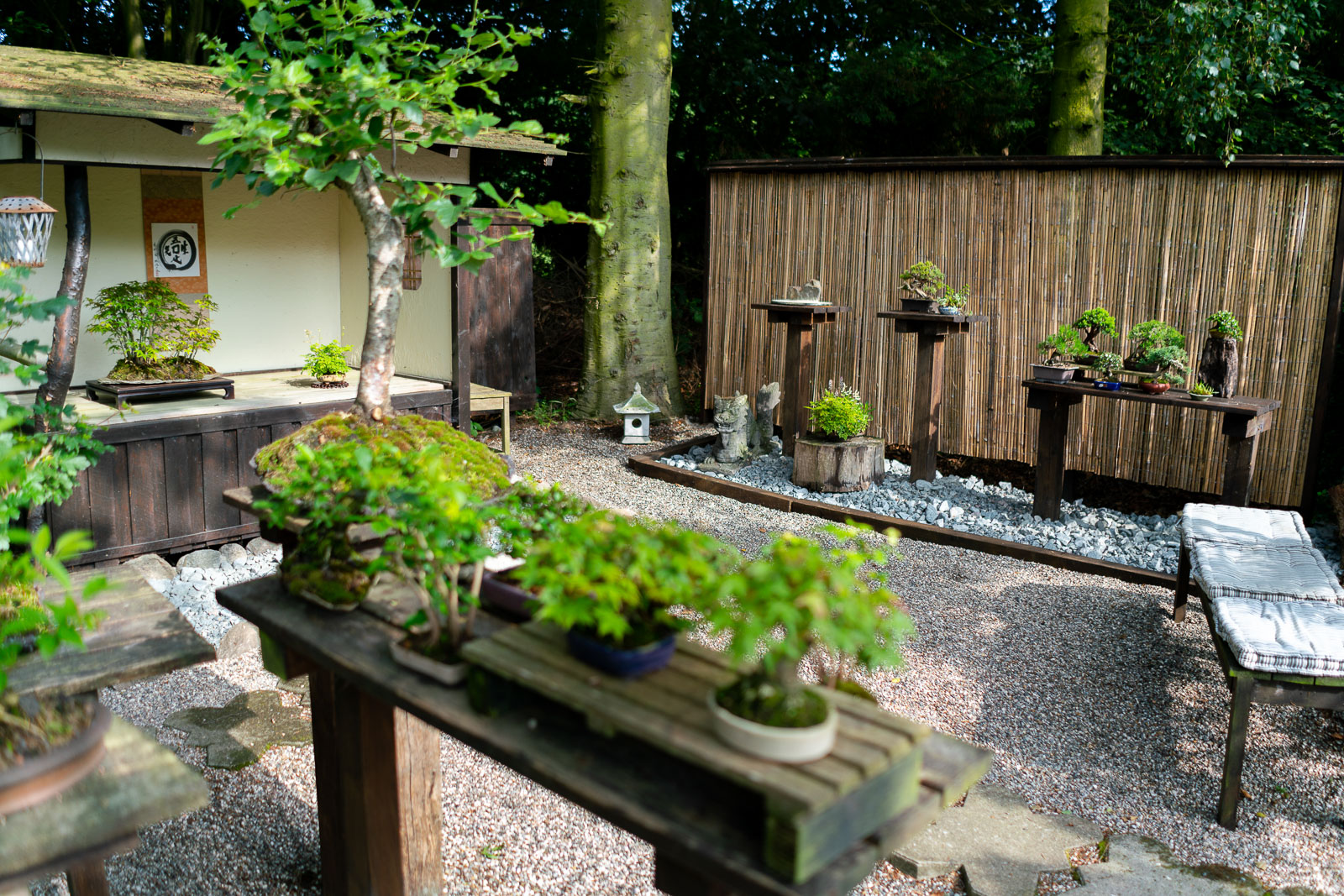
Kusamono and Shitakusa
There are two different terms describing the purpose of the potted plants. Kusamono is the Japanese word for literally a “grass thing”. Shitakusa is referred to as “undergrass”. They are grown with the same aesthetical values as bonsai. They have to look mature and well settled in the container, which means that even very soft small plants should look mature by filling out the pot, and not just being planted a moment ago. The same timeless feeling that we seek in bonsai, is appreciated likewise with kusamono and shitakusa.
Kusamono is used when the planting is displayed as the centre of attention, while the term shitakusa is used for plantings that accompany bonsai when displayed. Anything goes that are not trees but are soft plants expected to grow at ground level. It can be perennials or annuals.
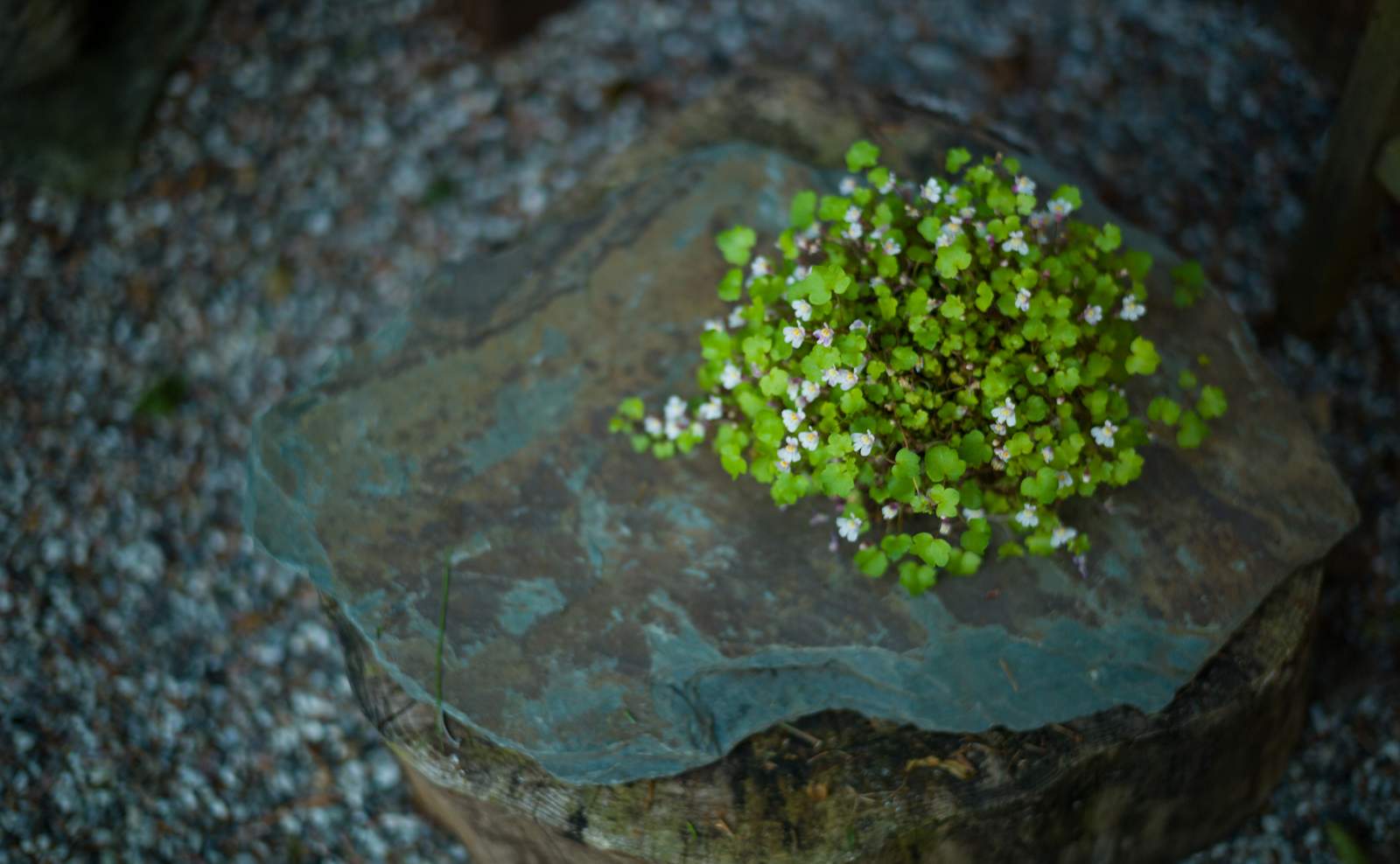
Attention on detail
When growing small plants in containers I achieve the same concern on details and enjoying of details, as I do with bonsai. In a traditional rich flowering garden, which I also enjoy and grow, there is more focus on the overall arrangement and volume of flowers than on studying the plants closely.
Growing soft plants in smaller containers move the focus from the overall impact to the beauty of the details. Each leaf and flower is paid much more attention than when grown in the ground and in larger numbers. This is like looking at a plant with a magnifying glass, discovering the beauty of the details.
